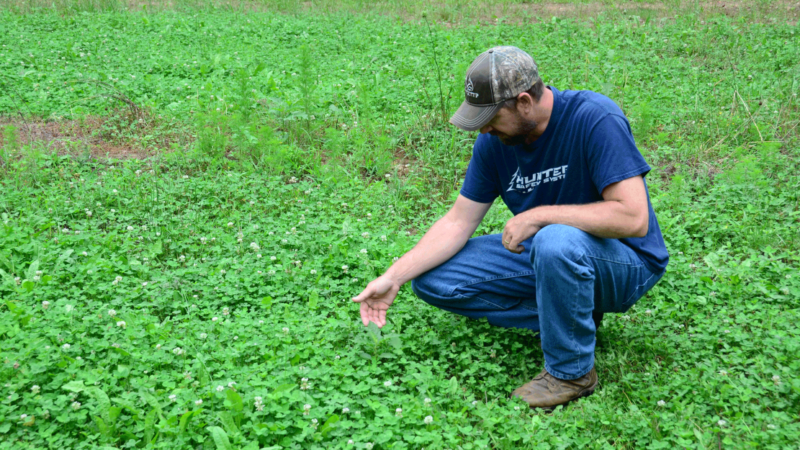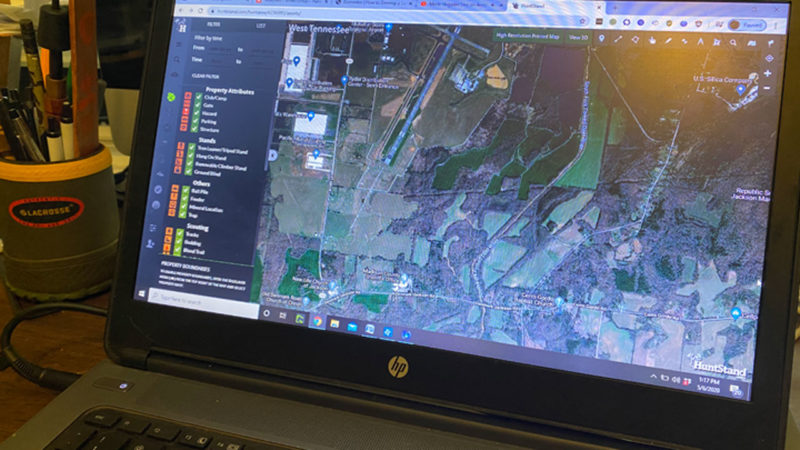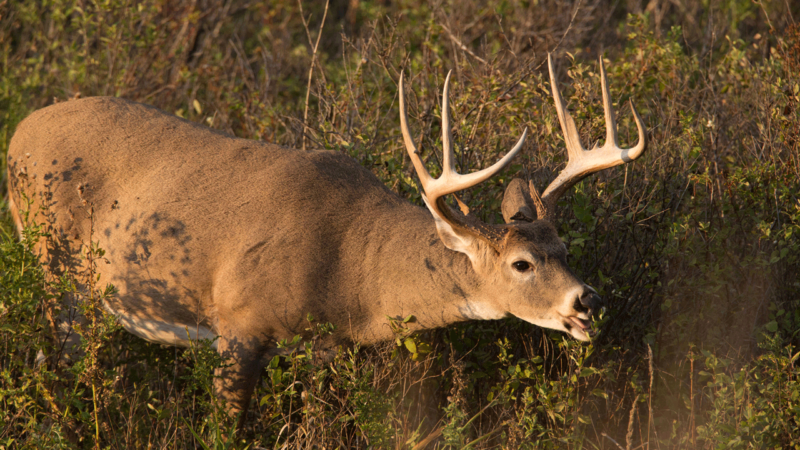You wouldn’t start building a house without house plans, yet many landowners and land managers are quick to jump into habitat improvement projects without any type of land management plan to guide their efforts. Creating a management plan for your land can be a great way to develop a long-term vision for your property and provide you with a road map to reach your goals.
Since every property is different and each landowner is going to have different goals for their property, there’s no way to provide you with a cookie cutter guide on how to manage your specific tract of hunting land. I wish it were that easy!
What I can do, however, is outline the things you need to consider when creating a land management plan, what to include, where you can get assistance, and even show you where you can get a free management plan template to get started. Then, you can decide if it’s something you should tackle on your own, or if you need to enlist the help of a professional wildlife consultant.

Considerations Before You Get Started
There’s a lot to consider before you jump into creating a management plan for your hunting property, starting with your overall goals for the property. Some questions you’ll want to be able to answer include:
- Are you managing strictly for deer hunting, or will you manage for multiple species?
- Will cattle or other livestock be involved?
- Is future timber value a consideration?
- Are there crops, hayfields or pastures on the property that will need to be maintained?
- Are there other owners/partners/family with a say in the management of the land?
- What resources do you have available as far as equipment, finances and manpower?
These are all important questions that can have a major impact on how you will ultimately manage your property. You’ll have to consider each of these as you begin creating a plan of action.
Take Inventory
Before you start doing any kind of real habitat or deer management work on your hunting land, it is important to have a firm understanding of what is currently there. Having a good inventory will go a long way in determining what steps you’ll need to take to get the property where you want it to be. Most of this work can be accomplished sitting in front of a computer using various mapping websites.
Begin the inventory process by breaking the property up into units with similar vegetation types. For example, each opening would be a unit, as well as any stands of timber similar in age and composition. The overall number of units may vary from one on a small property to a dozen or more on large tracts of land.
Once you’ve mapped your units out, you should do some ground-truthing to assess the vegetation composition of each unit. This doesn’t have to be a complete inventory of every plant and tree on the property, but you do want to note the dominant species, as well as any potential problem plants — invasive species such as autumn olive, privet, Sericea lespedeza, bush honeysuckle, kudzu or a whole host of others. Be sure to mark these findings on your inventory map for future reference.

In addition to knowing where various vegetation types are located on your property, it’s also important to know your soil types. Knowing what soil types are on your property will help you make better decisions about what should be planted where. Don’t fall into the temptation of planting food plots in an opening just because it’s convenient. Make sure the soil is right to produce a quality food plot. If not, you’d be better off managing the area for trees or native vegetation. Soil maps are available online at the USDA Web Soil Survey webpage.
To get a true big-picture view of your property, it’s also important to have an idea what the surrounding properties look like, as well. Much of that can be determined with aerial photos and some drive-by ground-truthing. This bigger picture will give you an idea of what food and cover sources are currently available, as well as what may be lacking in your area. If you can provide a resource that deer prefer and isn’t readily available on surrounding properties, that can be just the ticket to draw deer to your property.
Start With the End in Mind
Once you have a good grasp of what is currently on the property, and a general idea of what the surrounding properties look like, you can start making decisions about how you’d like your property to look. Keep in mind this is a long-term view. Don’t get hung up at this stage on when or how you’ll get the work done. That will come later in the plan. This stage is simply to get on paper how you ultimately want your property to look.
With a new map in hand, start laying out the key pieces you’d like to have in place — things like bedding areas, food plots, hard and soft mast trees, fallow fields and managed forests. This is by far the most difficult part of creating a plan and the one that requires the most knowledge about deer habitat and management.
Ultimately, you will have to make the decision about what your property needs to provide the best habitat possible based on what you currently have and what is available on surrounding properties. It’s important to understand the limitations of what you can realistically create and maintain, and plan accordingly.
The end goal, providing your main focus is deer, is to make every single acre beneficial to deer, providing either food, cover or water.
Many land managers focus their efforts on food plot creation and maintenance, and that can certainly be beneficial for both growing and killing deer. Keep in mind, however, that without good cover to create a sense of security for the deer, much of the food plot usage will occur at night — especially by mature bucks.
This cover can be created in openings by managing them for early successional habitat or in forested areas using timber stand improvement techniques or even clear-cutting small areas where appropriate.

If you’re not comfortable making timber management decisions, don’t hesitate to enlist the help of a licensed forester. Just be sure to seek one who has a background in wildlife and understands your overall goals, as most foresters are geared toward helping landowners grow trees for maximum revenue rather than for wildlife.
Don’t forget to consider the huntability of the property as you are laying out food plots and bedding areas. You’ll want to consider the predominant wind direction, potential stand sites and entrance and exit routes for those stands. You wouldn’t want to spend your valuable time and money to install a beautiful fall food plot only to find out you can rarely hunt it because it requires an uncommon wind direction.
How Will You Get There?
Now that you know where you are, and you’ve laid the property out on paper as to how you would like it to look, it’s time to start laying out an actual game plan to get from point A to point B. Don’t get overwhelmed by the amount of work to be done. Depending on the size of the property and the amount and complexity of habitat work to be done, it may be a five-year plan or it may be a 20-year plan. From this long-term plan, you can develop smaller annual work plans where you decide what steps you will need to take in the coming year to get closer to the end goal.
Make sure, as you’re planning your improvements, you not only keep in mind time constraints of completing the work but the financial constraints as well. You may have plenty of time to plant 50 acres of openings this year, but the cost of buying 50 acres of herbicide, seed, fertilizer and lime may prohibit you from doing so. That’s okay. Little improvements over time can yield big results, so don’t worry if you can’t get everything you want done in the first or second year.
Final Thoughts
To get the most from your hunting land, it’s important to have a detailed, long-term management plan in place to guide your efforts. If you enjoy a challenge and learning about deer and habitat management, don’t be afraid to get started!
Now is a great time to grab a map and notepad and head to your property to start taking an inventory. QDMA even has a free management plan template that you can download from their website to help guide you through the process.
As you get further in the process of laying out your dream property, you can always enlist the help of a wildlife or forestry professional. In the end, you’ll have a plan of attack to guide your efforts, making for better deer and better deer hunting where you hunt.

 By
By 



